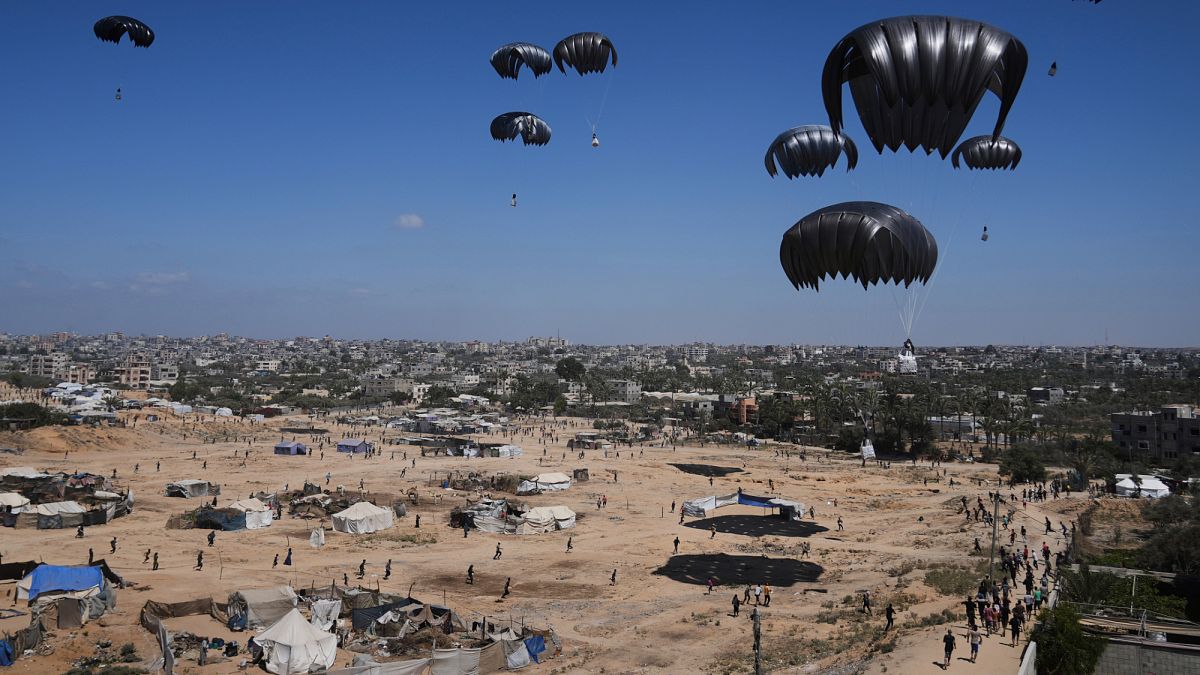

In recent times, the world has been witnessing a complex interplay of humanitarian efforts and military tensions. As events unfold, the global community is taking note of critical developments impacting various regions, particularly the Middle East and Eastern Europe.
In the Middle East, the Gaza Strip remains a focal point of humanitarian concern. A significant international effort is underway to deliver much-needed help to the region. Planes have been deployed to drop humanitarian aid into the densely populated area, aiming to alleviate the dire conditions faced by the people of Gaza. However, reports indicate that at least eighteen individuals, including vulnerable food-seekers, have tragically lost their lives due to artillery fire. This incident underscores the significant risks faced by Palestinians as they navigate the complex landscape of seeking essential resources amidst military activities.
Amidst the unfolding humanitarian crisis, numerous Jewish American organizations, many of whom traditionally advocate for Israel, are making their voices heard. They are urging prompt action to ensure safe passage and effective delivery of aid into Gaza. This call for intervention is heightened by the warning from a UN-backed food security group, which underscores the urgency by alluding to the possibility of a “worst-case scenario” regarding famine in the area. This has galvanized international focus on mitigating the escalating humanitarian challenges.
Simultaneously, tensions remain high in Eastern Europe, where Ukraine is actively asserting its stance against infrastructural military targets in Russia. Recent incidents include claims of drone strikes on Russian facilities, highlighting ongoing military engagements. The governor of Russia’s Samara Oblast region confirmed a strike on an industrial site in Novokuibyshevsk, indicating continued active conflict dynamics in the area. This further exemplifies the fraught relations and ongoing strategic maneuvers between the two nations.
In a somber reflection of the toll of conflict, Kyiv recently observed a day of mourning to honor the thirty-one individuals who perished due to missile and drone attacks. This collective mourning serves as a poignant reminder of the human cost of ongoing military engagements, with the youngest casualty being a mere two years old. Ukrainian President Volodymyr Zelenskyy’s acknowledgment of the victims further emphasizes the profound impact of these tragedies on the community.
Moreover, escalating rhetoric between international leaders contributes to heightened tensions. President Trump, engaged in a war of words with Russian official Dmitry Medvedev, has announced the mobilization of two nuclear submarines. This development occurs amid growing diplomatic strains and illustrates the intricate interplay of communication and posturing that characterizes international relations today.
While military escalations continue, diplomatic pathways and humanitarian considerations remain integral to addressing and resolving these global issues. The international community’s collective response, coupled with efforts from non-state actors, plays an essential role in mitigating crises and fostering pathways toward resolution and peace.
As these multifaceted situations evolve, the importance of dialogue, humanitarian support, and sustained diplomatic efforts remains essential in shaping favorable outcomes for affected regions and fostering global stability.
Source: {link}
